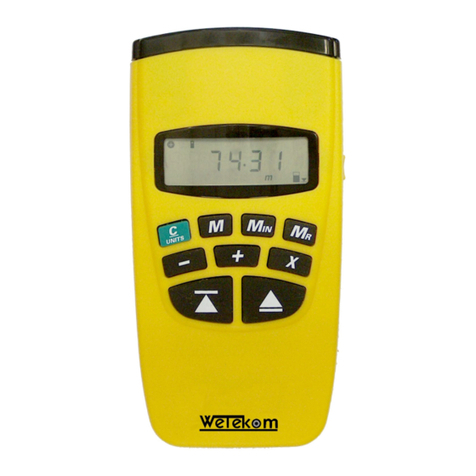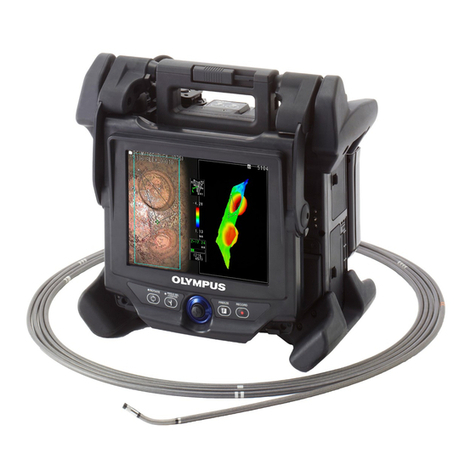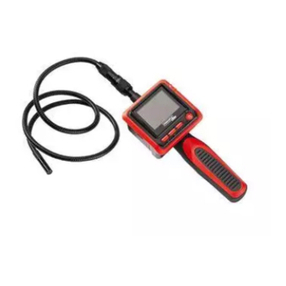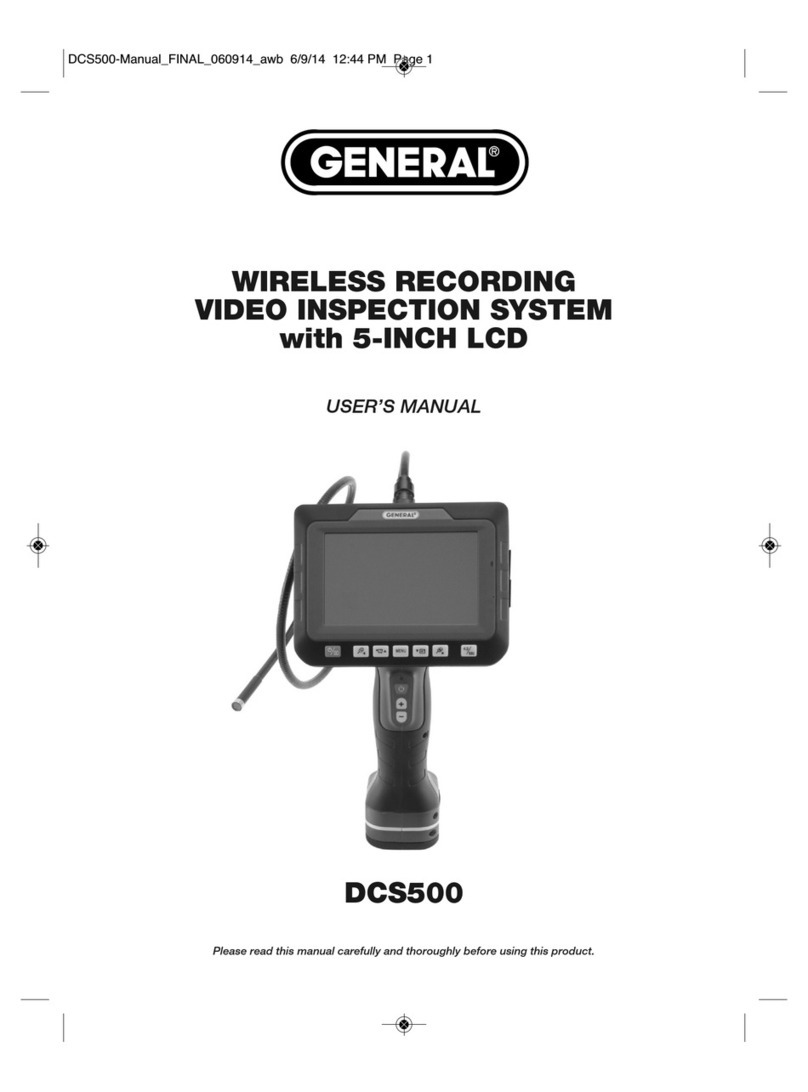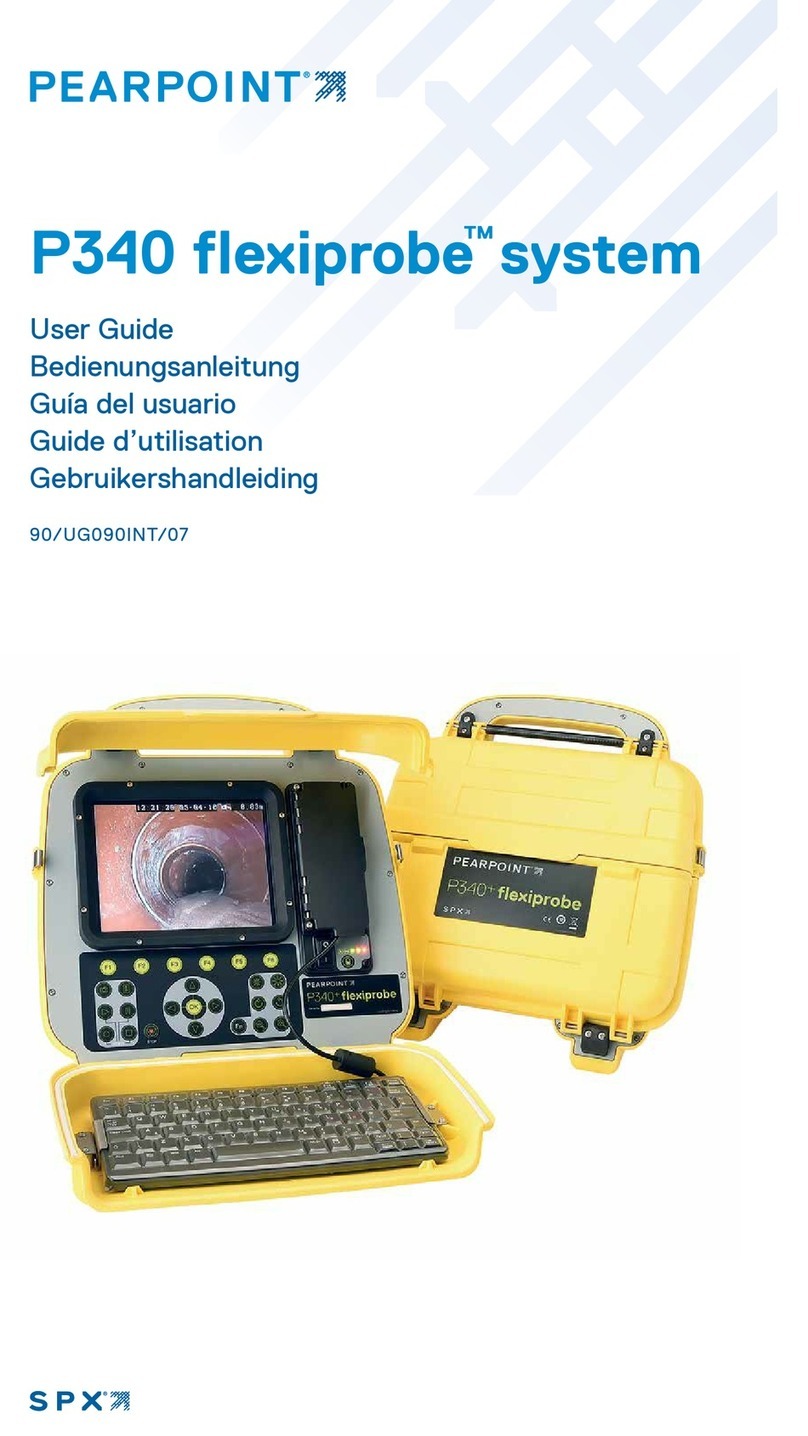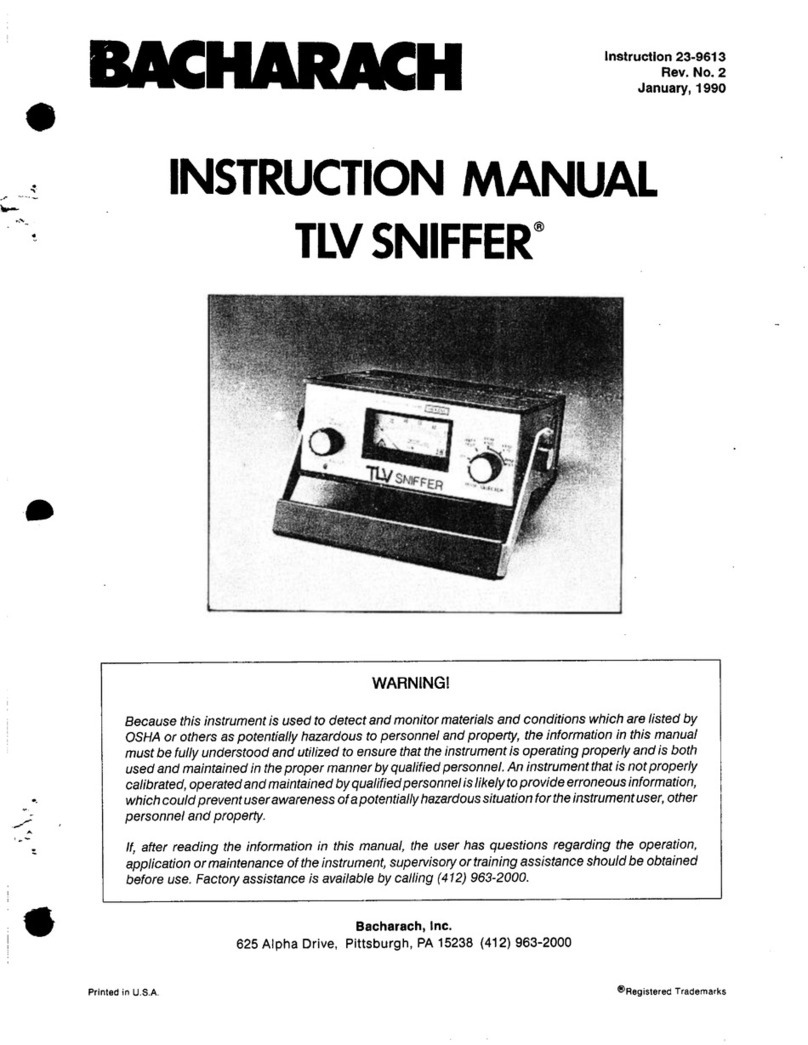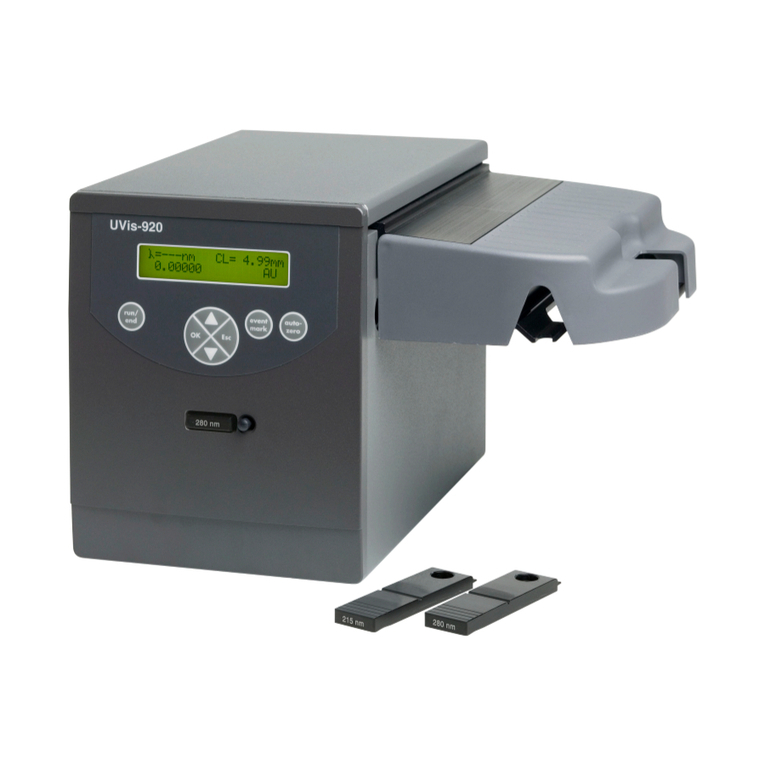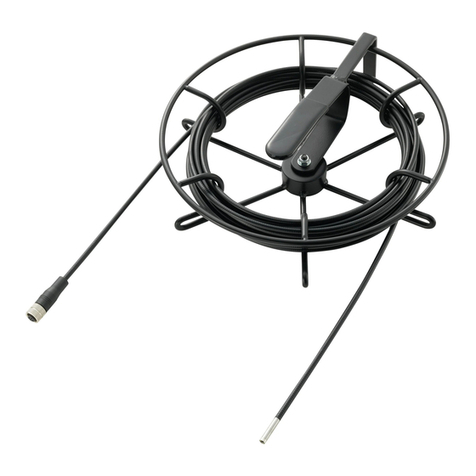Nic MA-3000 User manual

Fully-automatic Thermal Vaporization
Mercury Analysis System
Mercury/MA-3000
Instruction Manual
NIC-600-2166-04
Nippon Instruments Corporation

No.600-2166-04
Mercury Analysis System Mercury/MA-3000
Instruction Manual
Table of Contents
1. INTRODUCTION ................................................................................................................................................... 1
1.1. Safety precautions..................................................................................................1
1.1.1. Meaning of safety alert symbols......................................................................1
1.1.2. Installation precautions....................................................................................1
1.1.3. Maintenance precautions................................................................................1
1.2. System Outline.......................................................................................................2
2. OPERATING PRINCIPLE ................................................................................................................................. 3
2.1. Operation................................................................................................................3
2.2. Part names and functions.......................................................................................4
2.2.1. Front................................................................................................................4
2.2.2. Inside front cover.............................................................................................5
2.2.3. Rear ................................................................................................................6
2.2.4. Internal components seen from the top...........................................................7
2.2.5. Internal components seen from the right.........................................................8
2.2.6. Internal components seen from the left...........................................................9
3. SPECIFICATIONS ............................................................................................................................................. 10
3.1. Standard configuration .........................................................................................10
3.2. Component specifications ....................................................................................10
4. SYSTEM INSTALLATION ............................................................................................................................. 11
4.1. Conditions for installation .....................................................................................11
4.1.1. Environment for installation...........................................................................11
4.1.2. Power supply.................................................................................................11
4.2. Installation and connections.................................................................................12
4.2.1. MA-3000........................................................................................................12
4.3. Installing MA3Win.................................................................................................13
4.3.1. Installation.....................................................................................................13
4.3.2. Running on Windows 7 .................................................................................14
4.3.3. Run the batch file ..........................................................................................15
4.3.4. Installing USB-Serial Converter driver...........................................................16

No.600-2166-04
4.3.5. Setting Communication port..........................................................................19
4.3.6. How to uninstall.............................................................................................20
4.3.7. How to upgrade MA3Win ..............................................................................21
4.3.8. How to upgrade the version of ROM built into the MA-3000 .........................21
5. MEASUREMENT ............................................................................................................................................... 22
5.1. Measurement Operation Flowchart ......................................................................22
5.2. Samples ...............................................................................................................23
5.3. Necessary supplies for measurements.................................................................23
5.4. Preparation for measurement...............................................................................24
5.4.1. Preparing standard solution ..........................................................................24
5.4.2. Blank treatment of sample boat.....................................................................24
5.4.3. Blank treatment of additives..........................................................................25
5.5. Starting up the system..........................................................................................26
5.5.1. Starting the control software MA3Win...........................................................26
5.5.2. Starting the MA-3000 ....................................................................................26
5.5.3. Supplying carrier gas.....................................................................................27
5.5.4. Checking the tubes for leaks.........................................................................27
5.5.5. Discharging liquid from the drain tank...........................................................28
5.6. Measurement .......................................................................................................29
5.6.1. Setting the measurement conditions.............................................................29
5.6.2. Setting the table conditions...........................................................................29
5.6.3. Purge measurement......................................................................................29
5.6.4. Registering standard values..........................................................................29
5.6.5. Setting the samples.......................................................................................30
5.6.6. Starting a measurement................................................................................30
5.6.7. Finishing a measurement..............................................................................30
5.6.8. Reviewing a calibration curve........................................................................31
5.6.9. Measuring samples.......................................................................................32
5.6.10. Registering unspecified samples...................................................................32
5.6.11. Selecting method...........................................................................................33
5.6.12. Starting a measurement................................................................................33
5.6.13. Reviewing measurement data.......................................................................33
5.6.14. Printing a report.............................................................................................33
6. MAINTENANCE .................................................................................................................................................. 34
6.1. Inspection items ...................................................................................................34
6.1.1. Daily inspection.............................................................................................34

No.600-2166-04
6.1.2. Annual inspection..........................................................................................35
6.2. Errors and warnings .............................................................................................36
6.3. Troubleshooting....................................................................................................38
6.3.1. Degradation of peak sensitivity......................................................................38
6.3.2. Outlying blank value......................................................................................39
6.4. Maintenance.........................................................................................................40
6.4.1. Leak check....................................................................................................40
6.4.2. Dismounting the sample heating tube...........................................................41
6.4.3. Mounting the sample heating tube ................................................................43
6.4.4. Disassembling optical system components...................................................46
6.4.5. Cleaning the cell............................................................................................48
6.4.6. Cleaning the absorption cell, joints, etc.........................................................48
6.4.7. Greasing the drive mechanism of the sample changer .................................49
7. MA3WIN ................................................................................................................................................................. 50
7.1. Basic screen.........................................................................................................50
7.1.1. Control screen...............................................................................................50
7.1.2. Analysis screen.............................................................................................51
7.1.3. Common controls..........................................................................................52
7.1.4. Table window ................................................................................................53
7.2. List of menu commands .......................................................................................58
7.2.1. File (F)...........................................................................................................58
7.2.2. Edit (E)..........................................................................................................58
7.2.3. Run (R)..........................................................................................................58
7.2.4. Table (T)........................................................................................................58
7.2.5. System (S) ....................................................................................................59
7.2.6. Window (W)...................................................................................................59
7.2.7. Help (H).........................................................................................................59
7.3. File (F) menu commands......................................................................................60
7.3.1. New Project (N).............................................................................................60
7.3.2. Open (D) ......................................................................................................61
7.3.3. Save as (A) ...................................................................................................62
7.3.4. Page Setup (U)..............................................................................................62
7.3.5. Print Preview (V) ...........................................................................................63
7.3.6. Print (P).........................................................................................................64
7.4. Edit (E) menu commands.....................................................................................65
7.5. Run (R) menu commands ....................................................................................67

No.600-2166-04
7.5.1. Method Setting..............................................................................................67
7.5.2. Start icon.......................................................................................................69
7.5.3. Stop...............................................................................................................69
7.5.4. Emergency....................................................................................................69
7.5.5. Purge.............................................................................................................69
7.5.6. Measurement conditions...............................................................................70
7.5.7. Reset.............................................................................................................73
7.5.8. Leak check....................................................................................................73
7.5.9. Maintenance..................................................................................................74
TURNS ON WHEN THE SAFETY DEVICE FOR ACCIDENT PREVENTION IS
TRIGGERED TO STOP THE HEATER. ....................................................................................................... 78
7.6. Table (T) menu commands ..................................................................................84
7.6.1. Memo set (M)................................................................................................84
7.6.2. Table condition (C)........................................................................................85
7.6.3. Statistics (S)..................................................................................................87
7.6.4. EPA 30B Calculation.....................................................................................87
7.6.5. Registration of sample name (N)...................................................................87
7.7. System (S)............................................................................................................89
7.7.1. Communication port setting (C).....................................................................89
7.7.2. Environment settings (S)...............................................................................89
7.7.3. Color arrangement settings (W) ....................................................................91
7.7.4. Control parameter settings (P) ......................................................................92
7.7.5. Balance communication settings (B).............................................................92
7.8. Window (W)..........................................................................................................93
7.8.1. Display change (CTL)....................................................................................93
7.8.2. Display change (ANA)...................................................................................93
7.8.3. Screen layout initialization.............................................................................93
7.9. Help (H)................................................................................................................93
7.9.1. Version (V) ....................................................................................................93
7.10. How to determine a calibration curve ...................................................................94
7.10.1. Linear formula ...............................................................................................94
7.10.2. Cubic formula................................................................................................94
7.11. Calculation formula for mercury amount and concentration .................................96
7.12. Standard addition .................................................................................................97
8. MAINTENANCE PARTS ................................................................................................................................ 98
9. CONTACT ........................................................................................................................................................... 100

No.600-2166-04


1. Introduction
1
No.600-2166-04
1. Introduction
1.1. Safety precautions
1.1.1. Meaning of safety alert symbols
Warning
Indicates that incorrect handling could result in the death or severe injury
to the operator.
Caution Indicates that incorrect handling could result in moderate or minor injury
to the operator, or damage to property.
1.1.2. Installation precautions
Warning
· Ensure to connect the protective grounding to prevent electric shock.
1.1.3. Maintenance precautions
Warning
· Shut OFF the supply of power before doing any maintenance or it could result in
electric shock.
Do not measure the sample digested by HNO3 directly. This sample may
generate heat on the activated carbon filter. Dilute it less than 5wt% of HNO3.
Caution
· Maintenance of the heater, exchange of the combustion tube, optical unit and
collection tube must be carried out after the power has been turned OFF and the
heater has cooled down to close to normal room temperature or it could result in
burns.
· There is the portion which sharpened inside equipment when maintaining the
combustion tube.
· Sample boat may still burn itself at high temperature when taking out the sample
boat tray which measurement finished, please wear and perform the leather glove.
· Please be sure to check that the leak check is carried out and there is no leak of
oxygen gas after maintaining the inside of equipment.
· Be careful when touching or handling any of the glass components or they could
be broken.
· Some things are not on the equipment, and an inspiratory port is not taken up.
· Equipment is 55kg and heavy load. Please carry by three or more persons.
· Only qualified persons should be allowed to engage in the process of changing
the calibration curve.
· Ensure to discharge any liquid from the drain tank once the work has been
completed.

1. Introduction
2
No.600-2166-04
It is very important to confirm that the power has been turned OFF before starting
the discharge.
1.2. System Outline
The Mercury/MA-3000 is a mercury analysis system that realizes the quick,
highly-sensitive and precise quantitative measurement of mercury contained in liquids,
solids, and gases (requires optional unit) with very easy operation.
The system has a built-in auto sample changer as a standard feature that is operated
using a personal computer (hereafter “PC”).
After a sample has been set in place, the system automatically transfers it to the
measurement unit and performs the measurement, with the output data then being
analyzable in various ways such as through statistical calculations on a PC.
An optional unit being connected also allows reducing vaporization measurements as
well as the measurement of gas collection tubes.
It is strongly recommended to carefully read this manual before using the system in order
to ensure that its full performance can be utilized.
Fig.1 Mercury/MA-3000 System

2. Operating Principle
3
No.600-2166-04
2. Operating Principle
2.1. Operation
The sample heating furnace (H-1) heats samples to evaporate any mercury compounds
in them. The decomposing furnace (H-2A, H-2B) then decomposes the mercury
compounds in the gases generated in H-1 and removes any interfering ingredients from
them.
The mercury collector (H-3) collects the atomized mercury gas in the form of gold
amalgam, removes any interfering ingredients, and condenses and purifies the mercury.
After the heat decomposition sequence has completed, the collection tube is heated to
liberate the mercury again as mercury gas, and the absorbance is then measured.
Atomic absorption at a wavelength of 253.7nm is used in the detection.
Flow Diagram
V3
ドレインタンク
H-4
活性炭
P1
活性炭4
出口側流量計
光電管forREF
MFC
V1
V2
ファン1
forH1
ファン3
forH3
H-2A
H-2B
H-1
H-3
活性炭
1
ランプ
吸光セル1
吸光セル2
H-5
光電管
forSIG1
活性炭2
O2
圧力調整器
Boat
試料加熱管
水銀捕集管
トレーラック
光電管forSIG2
流量調整器
Drain tank
Mass
-
flow
controller
Pressure
regulator
Activated
charcoal
3
Mercury
collection
tube
Sample heating tube
controller
Fan 3
for H3
Fan 1
for H1
Tray racks
Lamp
Absorption Cell 1
Photoelectric tube for SIG2
Photoelectric
tube for SIG1
Outlet
flow
-
meter
Activated charcoal 2
Activated charcoal 4
Absorption cell 2
Photoelectric tube
for REF
Activated
charcoal 1

2. Operating principle
4
No.600-2166-04
2.2. Part names and functions
2.2.1. Front
No.
Name Function
Front cover Can be opened or closed when the top cover is
removed.
Operation status
LED “Green blinking”: Measurement in progress
“Green lights ON”: Stand by
“Red lights ON”: During maintenance, error
Tray racks Holds 10 racks of boat trays. The bottom space is for a
tray if the emergency stop is activated.
The inside is maintained at a positive pressure with
clean air.
Tray rack door Equipped with a door open/close sensor

2. Operating Principle
5
No.600-2166-04
2.2.2. Inside front cover
No.
Name Function
Inlet shaft For back and forth movement of boats
Sample inlet Sample (boat) inlet (Metal piece for retaining the
sample heating tube)
Horizontal shaft For horizontal movement
Vertical shaft Motor for vertical movement, with trapezoidal thread
Arm Holds the tray (equipped with tray detection sensor)
Lift For lifting the boats
Tray racks Holds 10 racks of trays
Area for dumping
trays A tray is moved here if a sequence error occurs.

2. Operating principle
6
No.600-2166-04
2.2.3. Rear
No. Name Function
Pressure regulator Adjusted to 0.05MPa, and connected to an
oxygen cylinder
Case fan Ventilates air inside the instrument
Activated charcoal for
carrier gas Used to remove mercury from carrier gas
Not used Used to connect optional units
Signal tower
connection port Used to connect status indicator lights
(Option)
RH-MA3 connection
port Port for connection to mercury collection
tube measurement unit (Option)
PC connection port Port for communication with PC
SC-3 connection port Port for communication with sample
changer for reducing vaporization (Option)
RD-3 connection port Port for connection with reagent dispenser
for reducing vaporization (Option)
Power cable
connection port
Exhaust outlet Port for measurement exhaust gas
⑪

2. Operating Principle
7
No.600-2166-04
2.2.4. Internal components seen from the top
No.
Name Function
Cell box 1mm cell, 200mm cell, maintained at a
temperature of 150°C with Heater H5
Lamp box Low pressure mercury lamp
Optical system
circuit board
Pipe heater For thermal protection of joints (Heater H4)
Mercury collecting
furnace Heater H3 for heating the collection tube,
Air-cooled by a fan from underneath.
H3 Thermocouples
Decomposing
furnace Heater (H2A, H2B) to maintain the catalyst at a
constant temperature
Sample heating
furnance For heating sample boats (H1)
Case fan For cooling the inside of the case
Infrared
thermometer for H1 Used to control the temperature of the sample
heating furnace (Two thermometers, one each
for low and high temperatures)
②
①
⑩
⑩
⑦
⑦
④
④
③
⑥
⑥
⑧
⑧
⑨
⑨
⑤
⑤

2. Operating principle
8
No.600-2166-04
2.2.5. Internal components seen from the right
No.
Name Function
V3 Valve Opens/closes the flow channel (Water
removal circuit)
V2 Valve Opens/closes the flow channel
(Measurement circuit)
V1 Valve Opens/closes the flow channel
(Decomposition circuit)
H3 cooling fan Cools the mercury collection tube
H1 cooling fan Cools the sample heating furnace
Drain tank Removes any moisture in the exhaust gas
Outlet flow-meter Used to check gas flow during
measurements
Activated charcoal for exhaust gas
Used to filter the exhaust gas
Activated charcoal for exhaust gas
Used to filter the exhaust gas
Mass-flow controller For flow control of carrier gas
Air pump for tray racks For decontamination of air inside the tray
racks
11

2. Operating Principle
9
No.600-2166-04
2.2.6. Internal components seen from the left
No.
Name Function
Power switch
Main circuit board

3. Specifications
10
No.600-2166-04
3. Specifications
3.1. Standard configuration
(1) Mercury analysis system MA-3000
(2) Data analysis/System control software MA3Win
(3) Standard accessories
(4) Personal computer
3.2. Component specifications
(1) Mercury analysis system MA-3000
Analysis method: Thermal vaporization atomic absorption
spectrophotometry
Carrier gas: Oxygen gas (Purity: at least 99%)
Samples: Solid, Liquid, Gas (RH-MA3 required)
Size/Weight: 430W x 770D x 470H, 46kg
Detection method: Atomic absorption spectrophotometry
Detection limit: 0.002ng
Measurement range: 0.005 to 25,000ng
(2) Auto sample changer
Number of samples: 100 (Boat tray, 10 racks)
Sample boat: Ceramic boat specified for the system
: Metallic boat specified for the system
(custom-made)
(3) Data analysis/System control software MA3Win
OS: Windows XP, Windows7
System control: Control of sample changer
Control of analysis conditions, Error
indication
Data processing: Construction of calibration curve,
Concentration calculation, Statistical
calculations

4. System installation
11
No.600-2166-04
4. System installation
4.1. Conditions for installation
4.1.1. Environment for installation
Room temperature: 15 to 35°C
Vibration: No vibrations strong enough to be felt by the human
body.
Dust, Fume: Environment with clean atmosphere free of fumes,
dust, and others which could affect the measurement.
(No smoking)
Installation space: 1000W x 700D (mm) or larger with a rigid foundation
and capable of supporting a weight of about 60kg.
Others: Install the unit somewhere not in direct sunlight or
exposed to air from an air conditioners or blower.
Special note: Never install the system anywhere volatile halide
reagents such as organic chlorine solvents are
handled. Also avoid installation anywhere those gases
could enter.
4.1.2. Power supply
Power voltage: Single phase 100,110,120,220,230,240VAC, 50/60Hz
(Should be selected before delivery)
Voltage fluctuation: Within ±5%
Capacity: 1.5kVA (3 pole plug)
Power quality: No surges, harmonics, or noise.
Distance from power outlet to the system: Closer than 2 m

4. System installation
12
No.600-2166-04
4.2. Installation and connections
4.2.1. MA-3000
(1) Place the MA-3000 where it will be operated.
(2) Connect the system and a PC with an RS232C null modem cable.
(3) Plug in the power cable and connect it to the power source.
(4) Connect the tube from an oxygen cylinder to the system.
* Use a tube of 4mm O.D.
* When the sample containing halogen, sulfur and selenium is measured, please be
sure to vent the exhaust gas, since it may contain acidic gases.
* Use a 4mm tube to connect the exhaust gas tube. Be aware that accurate
measurements will be impossible if the tube is broken.
Oxygen tube
Exhaust gas
tube
RS-232C Cable
Power cable
Oxygen tube

4. System installation
13
No.600-2166-04
4.3. Installing MA3Win
Install the control/analysis software of MA3Win on a PC before running the MA-3000.
* The operation of the PC itself and Windows, and the setup of peripheral devices
such as a printer are not explained in this manual. Refer to the manuals supplied
with any of those devices.
4.3.1. Installation
(1) Start up Windows
(2) If any other applications are running
on Windows, terminate them.
(3) Insert the CD-ROM.
(The installer will start automatically.)
(4) The “Welcome to the MA3Win Setup
Wizard” window will open. Click Next.
(5) The “Select Installation Folder”
window will appear. Click Next if you
typically wish to install the software in
the default folder. If you wish to
change the installation folder, click
Browse... and select the folder.
(6) When the “Confirm Installation”
window opens, click Next. Installation
will start and the “Installing MA3Win"
window appears.
(7)
Once installation is complete, the
"Installation Complete" window will
open. Click Close to close the
window
.
Other manuals for MA-3000
2
Table of contents
Popular Analytical Instrument manuals by other brands

iWorX
iWorX GA-200 Series Technical note

Bühler technologies
Bühler technologies GAS 222.35 Ex2 Installation and operation instruction

THORLABS
THORLABS FS201 user guide
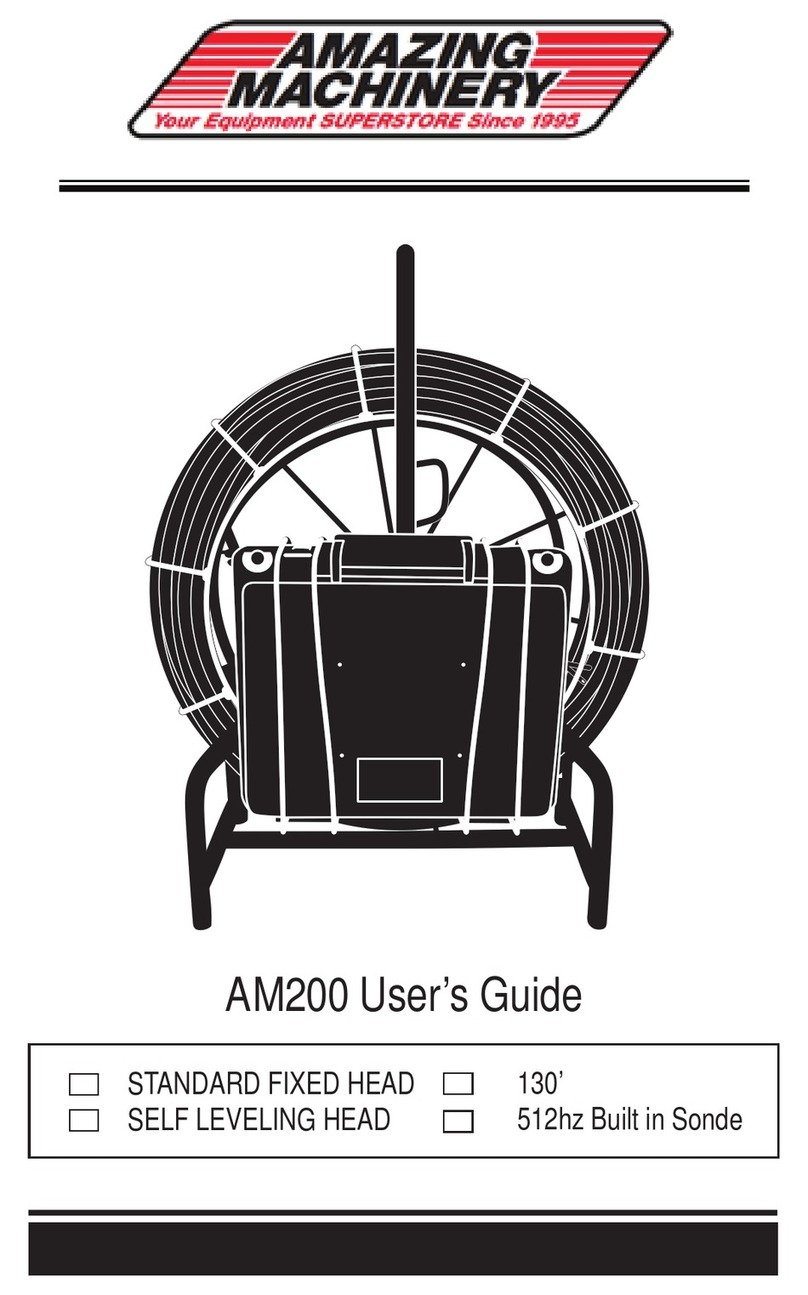
Amazing Machinery
Amazing Machinery Viztrac AM 200 user guide
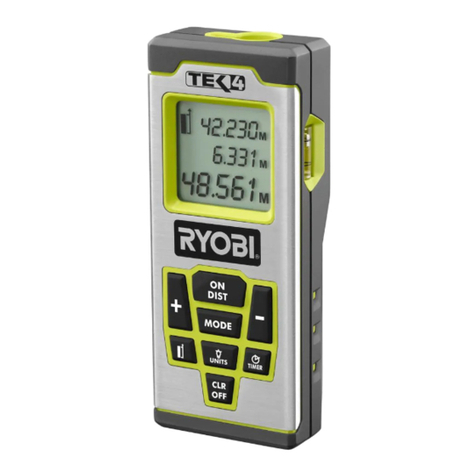
Ryobi
Ryobi RP4010 Operator's manual
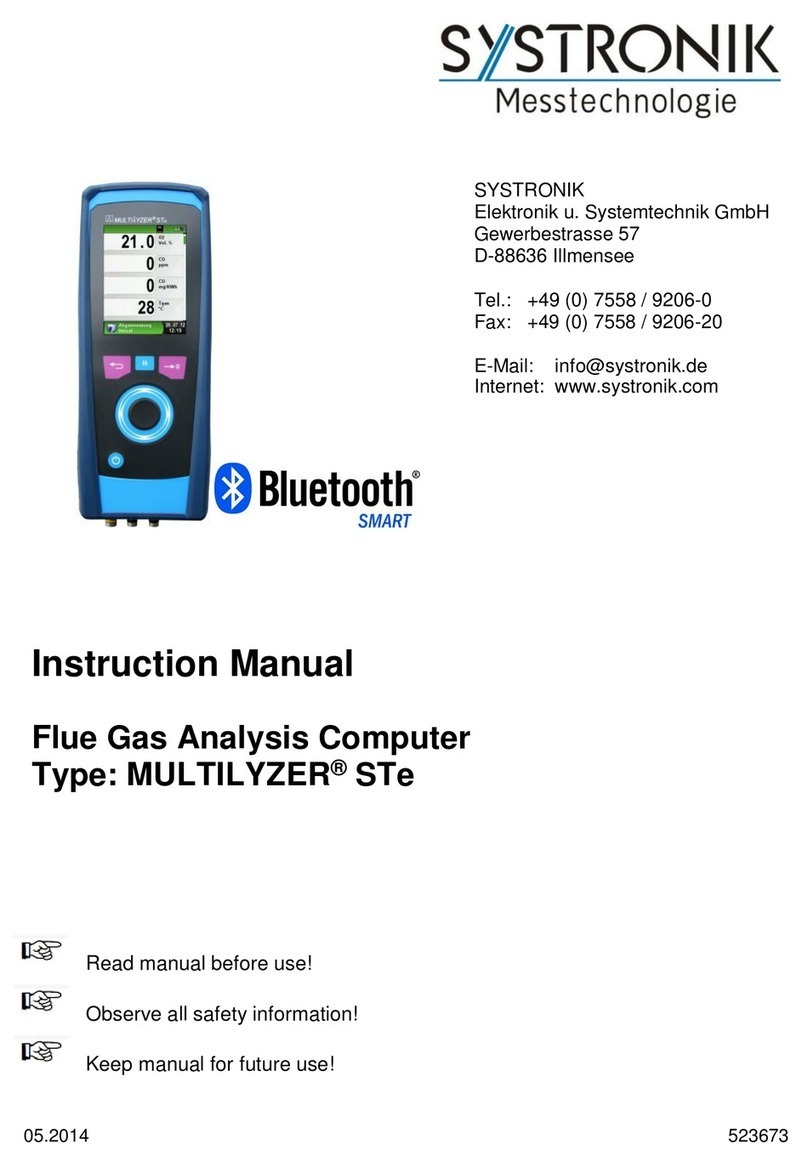
SYSTRONIK
SYSTRONIK MULTILYZER STe instruction manual

